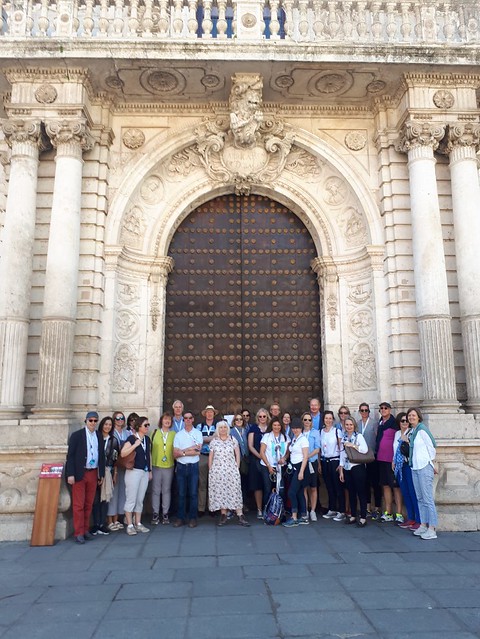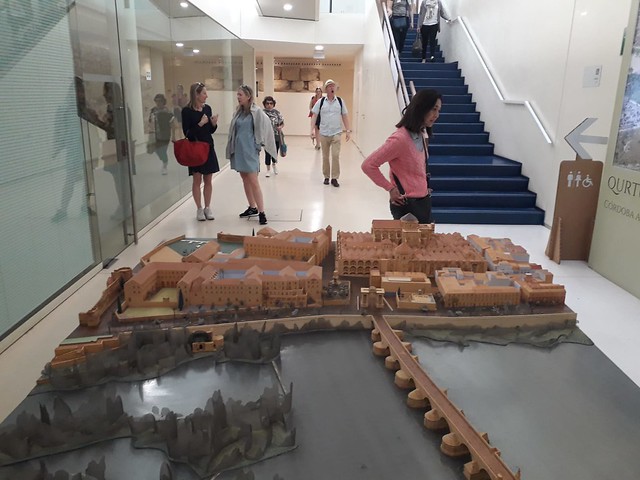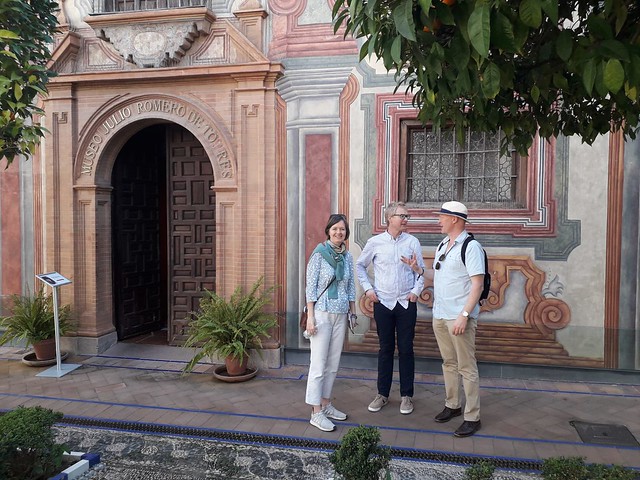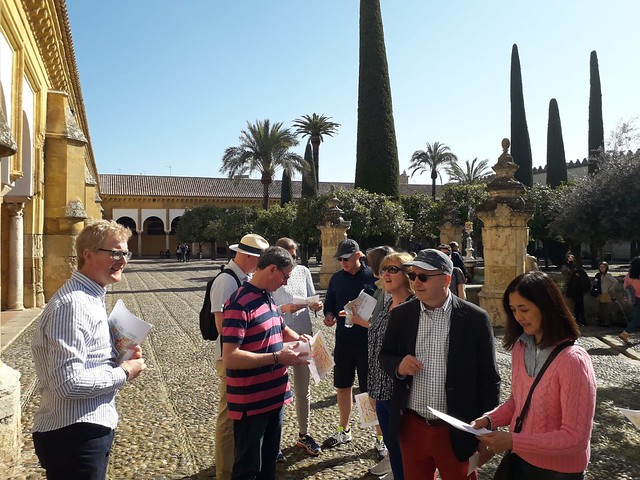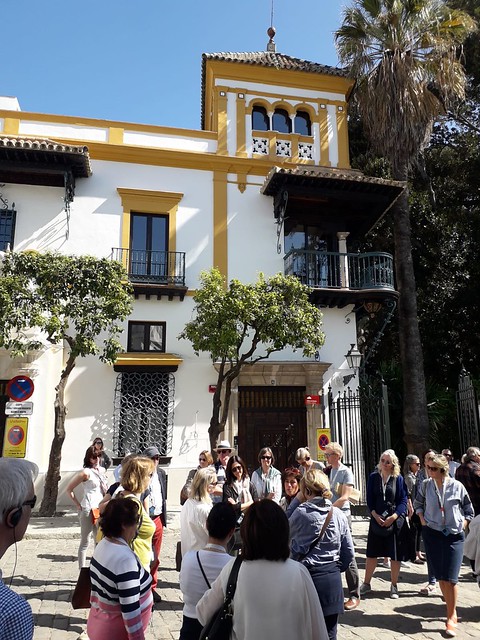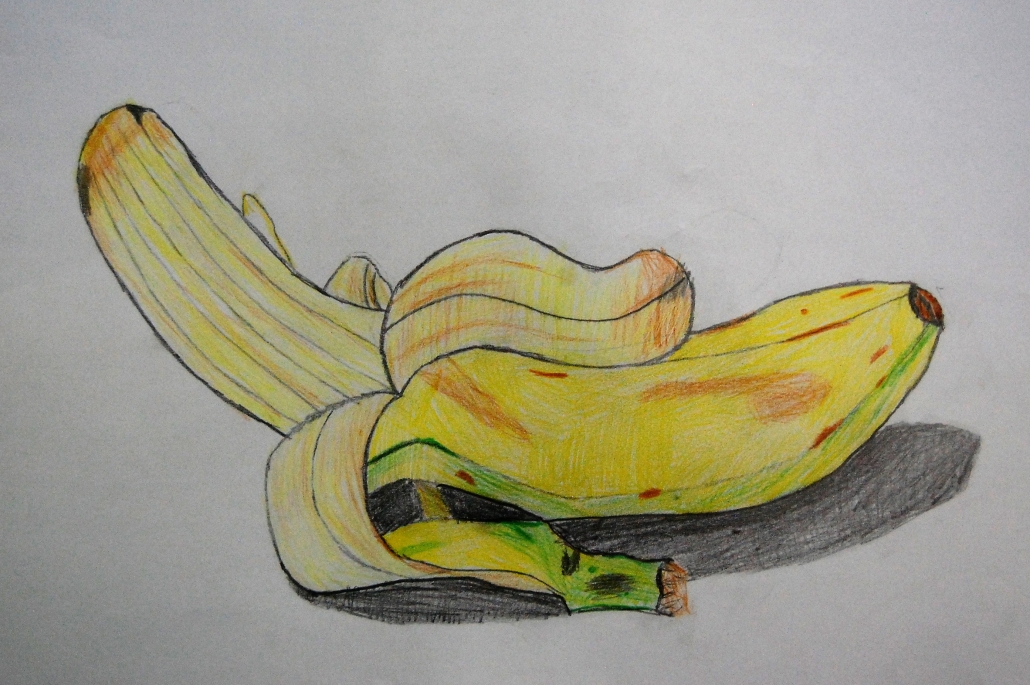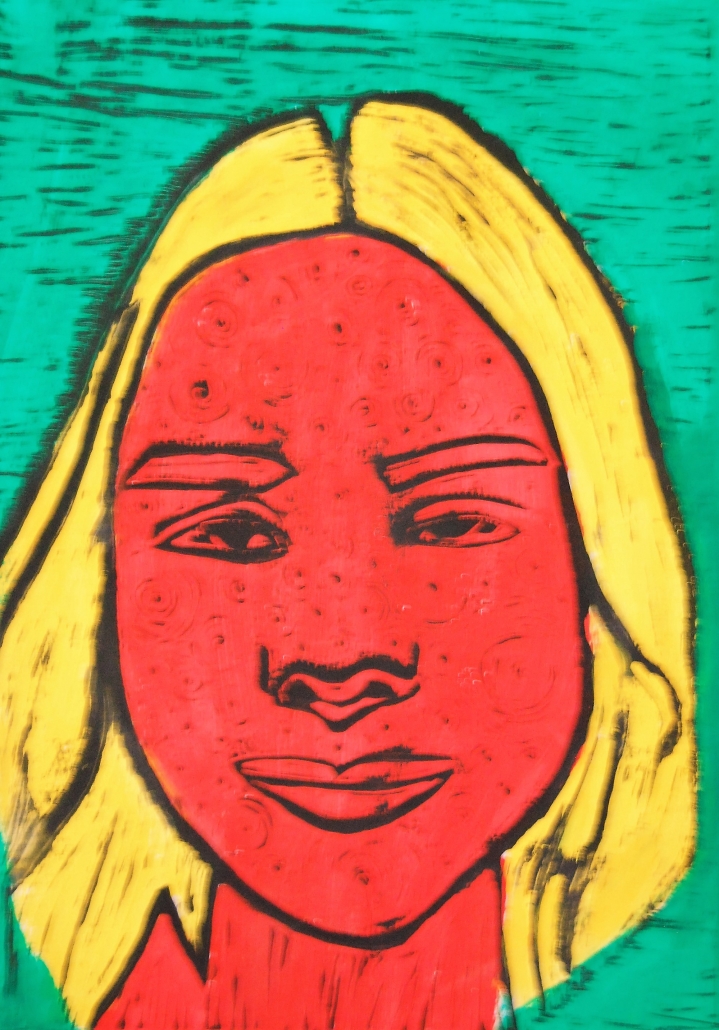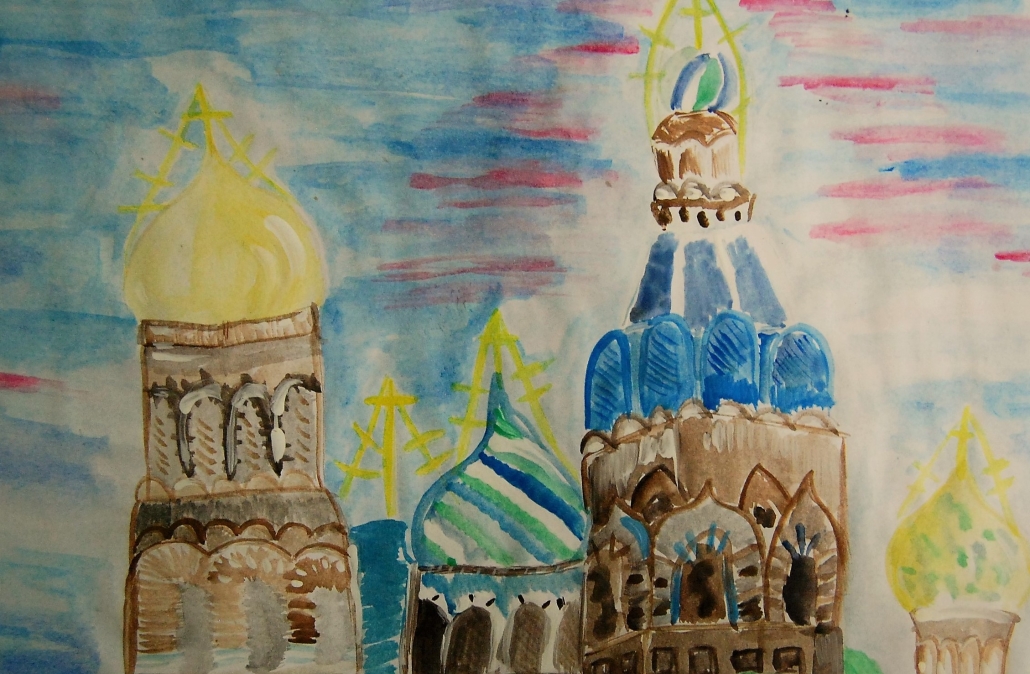UPDATE, APRIL 30th: the event is now SOLD OUT. There is a waiting list here.
Over the weekend we released details of a stellar line-up of presenters for our researchED event on Saturday 5th October. This is the organisation’s first-ever event in Dublin, in a year which sees it represented in the UK, Dubai, the USA, the Netherlands, Switzerland, Italy, South Africa and Chile. It’s truly an international phenomenon now. Check out the researchED website for more, and see our own event page here.
So far the following are coming: Keep an eye on the event page, and our own, as well as @researchEDDub on Twitter, for more announcements and a link to tickets when they go on sale.
Trish Dunlop (parent to pupils in Forms V & III) reports on last weekend’s parents’ trip to Seville.
A group of parents and family emerged from the winter drear last weekend, ably led by the Warden, Cathy and Michael O’Shaughnessy, and burst into Summer. It seems we had all been checking the forecast anxiously, and the sun shone brightly for the Columban cohort.
We stayed at a wonderfully located hotel, always only a walk away from the best that Seville has to offer a visitor. Just as well, since most parents seemed to be brandishing state of the art step-counters and activity tracking devices which we would then compare and contrast at suitable junctures. How many flights was it up to the top of the bell tower?
It was a pleasure to meet members of the St. Columba’s wider community as we all gathered that evening, spirits were high and we embarked on a weekend of chat, laughter and learning about the joys that Andalusia had to offer.
In stunning sunshine, we walked through the winding streets of Seville as we visited the Moorish Palace and Gardens, the stunning Cathedral, up thirty-five ramps to the bell tower giving a wonderful view of the city. The sensual discovery continued relentlessly – the orange dotted trees and brightly coloured produce as we walked the streets, the wafting scents of lavender, orange blossom and jasmine, the mosaic decoration on sandy golden stone and all punctuated by delicious food and drinks (often with a distant strain of flamenco-style music). All the while the chat and laughter continued. The day was a lovely combination of guided and “free” exploration, at times coming together as a group and at other times opting to “do our own thing” which seemed to be just the right approach.
Sunday started with a robust breakfast before taking a bus ride to Cordoba. Cordoba was a true revelation – its grand history announced by the iconic “Roman Bridge” that greeted us as we disembarked. Set up to explore museums of art and history, we were again “free-ranging” on the hilly streets that sloped up away from the River Guadalquivir.
Most remarkable – in its mixed traditional styles – is the “Mosque” or “Cordoba Cathedral”. We found the visit very moving and had the benefit of a very passionate and dedicated guide. We learned about the layers and layers of Cordoba’s history which are carved into the fabric of the “mosque”, together with its continued dedication to its true purpose of sacred worship.
We returned to Seville on the bus, which gave us a much-needed opportunity to count our steps again. A quick turnaround and off out again to a lively last supper together. The Warden kept us on our toes with the tour quiz, with all teams securing excellent marks on our self-corrected answer sheets. Last late drinks at the hotel, before the reality set in: an early return to less sunny climes via Ryanair.
The beauty of Seville and Cordoba extended beyond the architecture, the sensual pleasures, and the history. Their beauty can also be found in how the cities are lived, everywhere its residents can be seen enjoying eating, shopping, strolling and spending time with each other. For a brief interlude, and thanks to the super efforts of Cathy Boobbyer, the Warden and Michael O’Shaughnessy, we parents and family members of the St. Columba’s community were part of the beating heart of Andalusia, and we are all the better for it.
Below is an album of photographs from the trip.
The latest edition of ‘The Submarine’, the pupil-edited and -written magazine, has now been published in school (in paper form) and in flippable form on the English site via Issuu (use the arrows to navigate, and click again for a close look).
In this edition, there are pieces by Avi Johnston (On Journalism), Vivian Tuite (A College Diary, on her first days at the school), Sveva Ciofani (The Earthquake in Italy that No-one Talks About), Sinead Cleary (Ted Bundy), Poppy Gleeson (The Jump), Calvin She (on sharks), Noah Leach (Analog), Thando Khumalo (Mortality), Wolfgang Romanowski (on the visit by Emma Brown of Barnardo’s), and art work by Edna Johnston, Avi Johnston, Estelle Yu, Denis Cully, Thea Walsh and Camila Garcia Herrera.
On Friday, 15th February, in support of the Schools Mental Health Awareness week, the Parents Association organised a parent walk in the hills above the school. An early morning start, on a gloriously sunny clear day, the parents were transported from the School car park up to the starting point of the walk. A local authority on the area joined the group giving an informative talk during the walk. There was also a viewing of a Cairn located just above the school car park. Following the walk, the parents retired back at school to enjoy a hot cup of tea and coffee in Whitehall. The Walks in the area above the school are superb. For Parents that are not familiar with the region or may enjoy the great outdoors , we encourage you to join us on our next one.
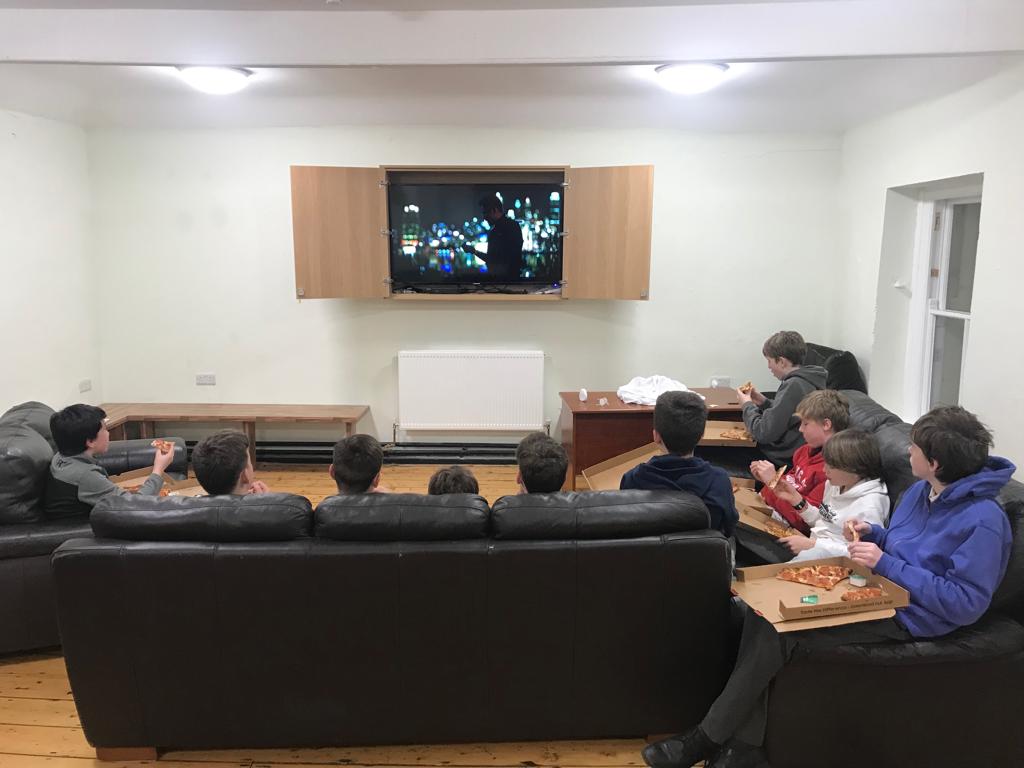
Pizza and movie night in Tibradden Junior Common Room. Housemaster, Scott Crombie recently sent us a photograph of the students enjoying their new sofa’s and 55inch television set which were donated by the Parents Association. An enjoyable new addition to the house. Beginning to look a lot like home. They’re the envy of the other houses.
Upcoming Events
Friday, 15th March is the final coffee morning for the Parents Association for this year. It would be wonderful if as many parents as possible would join the PA for tea/coffee and eats in the Drawing Room in Whitehall from 11h30 onwards.
Rev Owen will be holding a short prayer service in the Chapel at 11 o’clock before the coffee morning.
The 2nd Hand Uniform shop will be open from 11h45 to 12h45 for those parents wishing to purchase any 2 Hand items or cricket uniform.
The Wesley Interschools Music Festival took place over the weekend with St. Columba’s pupils competing in a wide range of events, both as soloists and in groups. The big success came on Friday night when the senior chamber choir, Sine Nomine, took home the William J Watson Cup for Best Four-Part Choir. Sakhile Khumalo came second while Songyon Oh was ‘Highly Commended’ in the Popular Song prize. In addition, Oscar Yan, Imogen Casey, André Stokes and Tania Stokes were all awarded ‘Highly Commended’ in their respective competitions.
A remarkable aerial view of the College has recently been rediscovered. This was taken long before the drone-age, perhaps in the late 1930s. Such photographs are part of the early Air Corps Glass Plate Negative collection, which covers the 1920s, 1930s and 1940s. They appear to have undertaken to aerially photograph Dublin city and surrounds in the 1920s and 1930s, covering prominent buildings and institutions.
The College photo can be seen most clearly here. Notable are the fresh-looking Founders’ Building (September 1936), the greenhouse in the Warden’s Garden (now the inspiration for the current construction of the new social centre) and the wall extending either side of the Dolls’ House/Garden Cottage.
Air Corps Glass Plate Negative Collection, copyright Defence Forces, courtesy of Military Archives, Ireland. Reference code: IE-MA-ACPS-GPN-168-1
This evening in one of the world’s great spaces, the Long Room in Trinity College, Dublin, the Provost, Dr Patrick Prendergast, launched a new exhibition showcasing the impact of the Gwynn family on TCD. The Gwynns were also enormously important in the life of St Columba’s too, and this connection is frequently made in the exhibition. The Warden and the Sub-Warden represented the College at the launch.
Of course, the impact of the family is marked here by the naming of Gwynn House. Three particularly significant figures were Provost of TCD E.J. Gwynn (also a Fellow of SCC), Reverend R.M. Gwynn (twice Acting Warden and so much else, including being a founder of the Old Columban Society – he is buried in nearby Whitechurch graveyard) and their father John Gwynn, Warden. Their talented brothers Stephen, Charles, Arthur and Lucius (the latter two died tragically early after stellar sporting careers, and there is a memorial plaque to Lucius in the Chapel) were also Columbans.
In launching the exhibition, Dr Prendergast thanked the Gwynn family for their generosity, and their stewardship of the documents. He said that the exhibition showed how deep the Gwynn family’s connections were with significant events in Irish history.
The Gwynn family feature a lot in the book produced last year by the Sub-Warden, Floreat Columba: 100 years of The Columban magazine, 1879-1979. Also, in 2017 Siobhán Tulloch, who spoke at the launch about the origins of the gathering of the documents and photographs which the Gwynn family has presented to TCD, sent us these evocative photographs of the College in the 1920s.
There is an excellent account of the new exhibition on the TCD site here, with plenty of photographs.
Our annual Mental Health Awareness Week officially begins today with another full and varied programme of events scheduled – the theme this year being “This is Us”. There are a series of hikes for all age groups (including the one up Kilmashogue Mountain yesterday), visiting speakers (including Tom Tate from Why Mind and Stuart Wilson from ZestLife), yoga with Old Columban Dylan Stewart and a ‘sound bath’ relaxation experience for Forms III and VI. The Transition Years will be out of classes on Tuesday for an activity day in Stillorgan while Wednesday is a designated “screen-free day”. The prep schedule is altered slightly too with an evening of board games for TY on Tuesday evening. There is a trip to nearby Ballyroan library for a talk on social media and stress for our younger forms while Thursday evening is a designated “movie night” for all junior forms (with a MHW spin of course). There is even a Valentine’s Day surprise – watch this space – and an art project (under the umbrella). Many thanks to the Cúram Team for their hard work putting together this extremely exciting programme of events – we all hope you enjoy the week ahead. Be sure to follow the week’s events on Twitter and Facebook.
Finally, the Chaplain has put together a Spotify playlist for this year’s Mental Health Awareness Week and you can listen below…
Shannon Dent reports on the final round of the senior debate, which took place last week.
The idea of completely getting rid of religion over time seems like an impossible task with a lot of issues at hand. It is a very difficult motion to lean to one particular side. There are pros and cons to each, and listening to this debate was a very intriguing experience and well done to all of those to took part in it.
The debate was between our two finalists, Glen and Hollypark. Glen supported the motion while Hollypark debated against it. William Zitzmann was the very first speaker. He talked about the general issues that have been caused by religion. He didn’t just mention events of the past but also mentioned acts of violence because of religion today! He even played with the thought that Jesus was actually anti religion. William gave a introduction to what Glen believed the motion meant. Their main idea concentrated on how religion and faith are two very different things. The first speaker from Hollypark was next and that was Georgia Keegan Wignall. Georgia gave a very articulate speech about how religion was part of human rights, and how we should be able to decide to follow religion or not. She talked about how religion actually brings people together and helps people deal with the very scary concept of death. Georgia, just like William, gave us the main idea for Hollyparks argument.
Ji Woo Park was next as the second speaker for Glen. He gave eloquent and understandable argument that definitely drew everyone in. He further explained the main argument for Glen; religion and faith are two different things and he gave us some differences between the two. Ji Woo even quoted the Bible and showed us how there are many examples of immoral ideas, such as misogyny. He said that people can be faithful and not have to follow all the rules of religion. He also went on to talk about the vast differences of the world back then and the world now. The second speaker for Hollypark was Catherine Butt. She opened up her speech by asking the audience to imagine what life would be like without religion. She even acknowledged the problems religion has caused but how they didn’t necessarily have to be linked back to religion as these people are extremists. Another very valid point that Catherine brought us was the one of charities and how most of them have been built up by religion. She said “Religion teaches the art of giving and this is not just christianity”.
In Glen’s closing argument, given by Harry Oke, they wrapped up and reiterated some of Glen’s strongest points. He brought the debate back to him and showed us a personal view on it all. He talked about faith and religion once again and he even related back to Catherine’s point of charities and he said that charities would continue as they are built by faith, not just religion and the church. He finished off by saying “A person can be good without religion them to be”. Then Alexandra Murray Donaldson wrapped up by talking about how some people need religion to have a good life. It is comforting and a tradition. She also said that people cannot be restricted from religion, they should be able to follow religion if that’s what they want. She finished off by saying “Religion is part of a person’s family and soul. How would it even be possible to get rid of it”.
In conclusion, the debate was summarized by Mr. McCarthy, one of the judges. He announced the winners, Glen, and the best speaker, Ji Woo Park. He gave a bit of his opinion on the verdict as well as some comments to all the speakers. Thank you to our judges (Mr McCarthy, Ms Morley and Mr Brett), the audience members and to all of those who took part. Finally a big thank you to Ms Duggan for co-ordinating the debate throughout the year.
This morning in Chapel the Sub-Warden talked about the idea of ‘Factfulness’ as promoted by the Hans Rosling. In this post are some links for pupils who are interested.
Rosling’s book Factfulness: ten reasons we’re wrong about the world – and why things are better than you think (co-authors Ola Rosling and Anna Rosling Rönnlund) is now in the College Library. An excellent resource too for Sixth Formers thinking about their Leaving Certificate English composition topics.
The Gapminder website is here, with lots of fact-based resources on the world today.
The Dollar Street project is here: you can see into the different lives and homes of people all over the world.
Below, Hans Rosling himself talks about a fact-based view of the world in “The Best Stats You’ve Ever Seen”.
Coffee Morning & Guest Speaker
A wonderful coffee morning was shared with around 60 parents in the Drawing Room in Whitehall on Friday morning. Thank you to our wonderful guest speaker, John Lonergan, who presented a thought provoking talk on “Parenting – The Challenges and the Rewards.” Having spent 24 years as the Governor of Mountjoy Prison, retiring in 2010, John has spoken for over 20 years on the topic of parenting, sharing his personal experiences as both a parent and grandparent.
John’s presentation on Friday was light-hearted with a simple matter-of-fact manner accompanied by charming anecdotes. As John rightfully pointed out, “there is no other task, that is as demanding, challenging, responsible, complicated and never-ending as, parenting.” There is no end to the list of skills and competencies that are expected of us.
John concluded that our primary goal as parents should be to guide and nurture our children to becoming mature, capable, independent, responsible and self-sufficient adults. Thank you John for emphasizing the importance of communication and consensus. For reminding us too of the joy of parenthood and for making us realise that parenting is often a two-way learning process.
Thank you parents for joining us and we hope to see you at the next PA event on the 15th Feb – see details below.
Recent Purchases by the Parents Association
In December the PA committee purchased five sofas and a television for the Common Room in Tibradden House. Once the television cabinet is completed, the TV will be installed. These will be welcome new additions for the comfort of the students in the House.
Next Get Together Event
To coincide with Mental Health week in the school the Parents’ Association is organising a walk for parents on 15th February at 9.00 am. This will last for about an hour and a half and we will be back at the school in time to have a coffee or tea before the Parent-Teacher meeting at 11.00am.
The Warden has written an article on fee-paying schools for the Sunday Independent ‘School League Tables’ supplement. Here is what he wrote:
Parents love a school league table, particularly when it shows their child’s school in a good light. However, I am rather confused by the way the school league tables in Ireland are currently devised by a media eager to draw comparisons. Schools that send all their leavers to Irish universities get 100% (or even higher by an anomaly that I don’t understand), while schools such as ourselves, that think it is a good thing to encourage leavers to look around at universities in the UK, Europe and the USA, end up in 500th place, because, although every leaver goes on to third level education, only a third of them stay in Ireland, despite two thirds being from the island. Since when has having a narrow world view been a mark of excellence, particularly in a country with such a huge diaspora?
Last year here at St. Columba’s College we averaged 484 points per candidate at Leaving Cert, with a non-selective intake, a result that would probably put us at the top of the tree, or very close to it, if there were a league table based on these results. However, you may be surprised to know that I am delighted that there are no such tables here in Ireland. I have seen the disingenuousness and the shenanigans wrought by league tables in the UK. When a school’s reputation is based on its GCSE or A Level results, as is the case with the government league tables over there, inevitably schools start to manipulate their exam entries accordingly. If an academically weaker child gets through their vigorous screening process, rather than deciding to do the best for that child, they create barriers for entry into the senior school, saying, for instance, that unless a pupil gets 8 A*’s or A’s at GCSE then he or she cannot continue in the school, or perhaps that unless the GCSE is an A* then the pupil may not continue with that subject to A Level. The child is only valued if he or she can contribute to the school’s awesome academic reputation. If not they are expendable. An exception might be made for a particularly good loose forward, of course, or a first violin.
There is much worse than this. Pupils going into their final year will be told to drop their weak subjects or advised that, if they refuse or ‘do not heed the school’s advice,’ they will be required to enter for the exams privately, so that the results will not appear in the official statistics of that school. It gets worse still. Some schools with international operations will enter their weak candidates through the international centre, thus ensuring that only those who are going to get the top grades are counted in the results that people see. I have even heard of a situation where a school created another school as a separate legal entity, so that weak candidates could be entered through that means, through a school that existed only on paper! It’s possibly not illegal but it is certainly immoral! My own belief is that once a child has entered a school, that school has the obligation to see that child through and do the best for them, regardless of their ability, rather than considering them surplus to requirements if they do not ‘add value.’
Maybe in Ireland some of these excesses would be avoided, since schools are by definition non-selective, but you can see where the introduction of Leaving Cert league tables could lead and I don’t think anyone here wants to run the risk of creating a league table monster such as exists in the UK. So up here on the hill we’ll just have to continue to grit our teeth each year when the current league table is published, until someone comes up with a moremeaningful way of judging schools in the overall context of the education they provide and the future opportunities they offer their alumni, both in Ireland and further afield.
Irish private schools are becoming an increasingly attractive option to many overseas parents, especially if they are looking for boarding. Being the only English speaking country in the EU after March 29thmay have benefits. Coming from the UK I am dismayed at the ever-increasing expense of a private education there and I cannot help feeling that the costs are out of control, as schools compete to build more and more state of the art facilities. Most private schools in the UK were founded to assist the sons (usually) of merchants or clergymen to get an education, but now that a full boarding education can cost £40,000 (45,000+ euros) a year, and even day fees are often upwards of £20,000, most hard-working professional parents can no longer afford to send their children privately, even if both are earning a decent salary.
Private education in Ireland is considerably less dear than it is in the UK and, while I do not deny that the cost is still a stretch, it is at least within range of more people. I therefore see private schools in Ireland as less exclusive and elitist than in the UK, especially since schools cannot screen pupils academically before offering places. We may be relatively expensive here at St. Columba’s, as journalists are often quick to point out, but we are still less than half the cost of the equivalent in the UK, while offering, I think, an equally good product.
Heads of private schools here may be reluctant to defend their schools because they have a perception that they are not popular in the public imagination.Indeed, when I moved here I was told to keep my head down and not court publicity, since ‘it is best to fly under the radar’. I don’t really subscribe to that approach because I believe very strongly in the service that we offer and which is offered by the excellent private sector as a whole. There will always be naysayers but there is certainly nothing to be ashamed of and plenty of which private schools can be very proud.
Tadhg Rane O Cianain reports on last weekend’s Junior Debate final.
To be serious about climate change one needs to give up meat. This was the motion of the final of the Junior Debate this year, held in the BSR last Saturday night . On the proposing side, there was Calvin She, Form I, who started his team off with a good speech showing that his work was well researched, giving many statistics and facts. Next from the proposing Emma Hinde, Form III, delivered her speech with a nifty use of pie charts to back up her argument while also putting the opposition on the spot with a couple good point of orders. Form III pupil Caroline Hagar projected her speech across the hall with great ease and confidence giving many good examples backing the already well-delivered speech, she also contributed strong replies on a couple tricky queries from the audience. Last but not least Alex Hinde from Form II rounded up his teams work, which is a hard job, but Alex managed with ease much like his sister. On the opposing team, Donald Thompson, Form III, started his team off with many good points about eating habits affecting climate change and how we can help climate change by buying from local organic farmers instead of big companies. Ben Patterson then delivered his verdict giving good examples on the argument and altogether laying down a good case. Next Christopher Atkins, another Form I pupil, gave his speech with ease bringing many interesting points onto the floor having experience from previous debates. Finally, for the opposing team, Daniel Murray, also Form I, who throughout the debate had viciously questioned the opposition backing them into a corner where they struggled to answer, attacked and dismantled the opposition’s argument with ease and with a great choice of words. In the end the proposing team reigned victorious through confident well delivered speaking and great choice of evidence. The best speaker was awarded to both Daniel Murray and Caroline Hagar, who both performed amazingly. All in all it was a great intense debate with a great topic and I am counting down the days until the next one.
The Art Department has issued the themes for this year’s Art Craft & Photography Prizes, for both Junior and Senior pupils. The themes for this year’s prizes are JOURNEY and IDENTITY and a wide range of styles and techniques are welcome. This year’s competition will be judged by artist and Old Columban Conrad Frankel who will also speak on the night of the prize giving. One of his paintings is shown above.
Click here for full details of the brief, with useful tips for entrants.
On a rainy day in November, one of the 3rd form sets went to the DSPCA for our CSPE action project. The Dublin Society of Prevention against Cruelty to Animals is Ireland’s largest and oldest animal welfare organisation.
When we arrived, we were given a very interesting and factual talk. We were given a brief history of how animal cruelty came about and learned about some of the work they do at the DSPCA.
Animal cruelty started to happen near the end of the industrial revolution. This was because land based animals weren’t needed weren’t needed for economical purposes, like transporting goods. The animals that weren’t needed would be shot or left to die. People thought that animals only were useful for economical purposes and didn’t have any feelings.
In the 1870s Mary Wright Sewell changed people’s views by writing “Black Beauty”. The book was written from the perspective of a horse which was mistreated. Many animal welfare organisations were set up at this time. This was about 150 years ago and cruelty towards animals still goes on. That means people still don’t understand that animals should be treated with respect, or people just don’t care.
The DSPCA was established in 1840 and the centre we visited in Rathfarnham opened in 2003. They have 5 stages when it comes to rescuing animals and they call them the 5 Rs. They are Rescuing the animal. They might have to Rehabilitate the animal as they might be scared of other humans if their owner treated them badly. They will Reunite the animal with the owner if the feel it is right. Otherwise they will Rehome the animal. At the DSPCA they also care for wild animals so they will Release them when they are ready.
At the DSPCA they care for all animals from labradors to African land snails! They help about 30,000 animals yearly. It costs them €3.3 million a year to run. They are an NGO which means they don’t receive any funding from the government apart from small grants. They get most of their money through fundraising and donations. At the DSPCA they only have a few employed professional vet and the rest are all volunteers.
At the DSPCA they have dealt with a lot of appalling cases of animal cruelty. We were told one of the cases. It was about a dog which had fleas. The owner didn’t know what to do so instead of taking the dog to the vets, the owner decided to cover the dog in diesel. The next week the fleas were still there so the owner scrubbed the dog with a Brillo pad. They were still there so the owner decided next to cut the patches of skin with fleas off with a Stanley knife. When the DSPCA found out they cleaned the dog and had to stitch up where the owner had cut the dog. When the dog healed, it was adopted by one of the volunteers.
After the talk we were lucky enough to look around the cattery and the dog kennels. In the cattery there were separate pods which all the healed cats were in. All the cats were very cute but sadly we weren’t allowed to pet them! Next we went to the kennels and the dogs were also very cute. At the end we even got to hold some adorable puppies!
It was a really interesting and fun trip and I would love to go back another day.
The latest edition of the pupil magazine, The Submarine, has just been published, and you can read it here via Issuu (click on the arrows to go through the pages, click again for a closer view, and click the icon bottom right for full-screen). Tania Stokes, Avi Johnston and Edna Johnston put it together.
Among the pieces are (written) Georgy Dementiev, Sinéad Cleary (‘In defence of Oedipus’), Shannon Dent and Marcus O’Connor, and there is lots of talented and skiful artwork by Amelie Buzay, Paolo Garcia Leslie, Isabelle Townshend, Kate Higgins, Jeanne Levesque, Max Cully, Glory Popoola and Frances Wilkinson.
Moreover, you can also listen to Noah Leach’s Song ‘Muse’ via Soundcloud below or via this link.
Transition Year pupil Elise Williams writes about last year’s Junior Certificate Art Projects, which will be on display in the BSR this Sunday after the Christmas Carol Service.
Last year, Form III art pupils undertook the Junior Certificate Art Project. The projects were based on a theme of which there were five to choose from. The themes we were given were broad, but we could expand on them and each create our own version of the topic. The projects were very much centered around the preparatory sketches, the work that was put into planning them, and brief explanations for the thought processes.
The course required three art pieces, three preparation pieces to support each one, two supporting pieces, and two one-hour long drawing exams. There was a 3-D construction or sculpture, a 2-D painting or design, and an option to do a craft piece with choices to use calligraphy, puppetry, batique, a lino cut, woodwork, etc. My class seemed challenged not by the projects themselves, but the pressure to complete them in the frame of time given.
An important part of the course was to show how our work developed and how new ideas generated over time. In addition to our three projects, we completed an hour-long drawing exam of a still life and a second exam which required us to draw a model from life.
We all worked hard on our projects and as the due date came closer we became more satisfied with the results of our work. It was a good experience that taught me creating art takes time and a lot of work because it is not just the art, but the ideas behind it.
This Sunday December 9th, there will be an exhibition and opportunity to view our work displayed in the BSR after the evening of the Carol Service. We hope to see you there!
St. Columba’s College,
Whitechurch,
Dublin 16,
Ireland
D16 CH92
Tel: +353 (0) 1 490 6791
Fax: +353 (0) 1 495 6695
Twitter: @sccdublin
Email:
Admission Enquiries: admissions@stcolumbas.ie
All Other Enquiries: reception@stcolumbas.ie
Charity Regulatory Authority Number: 20005306





